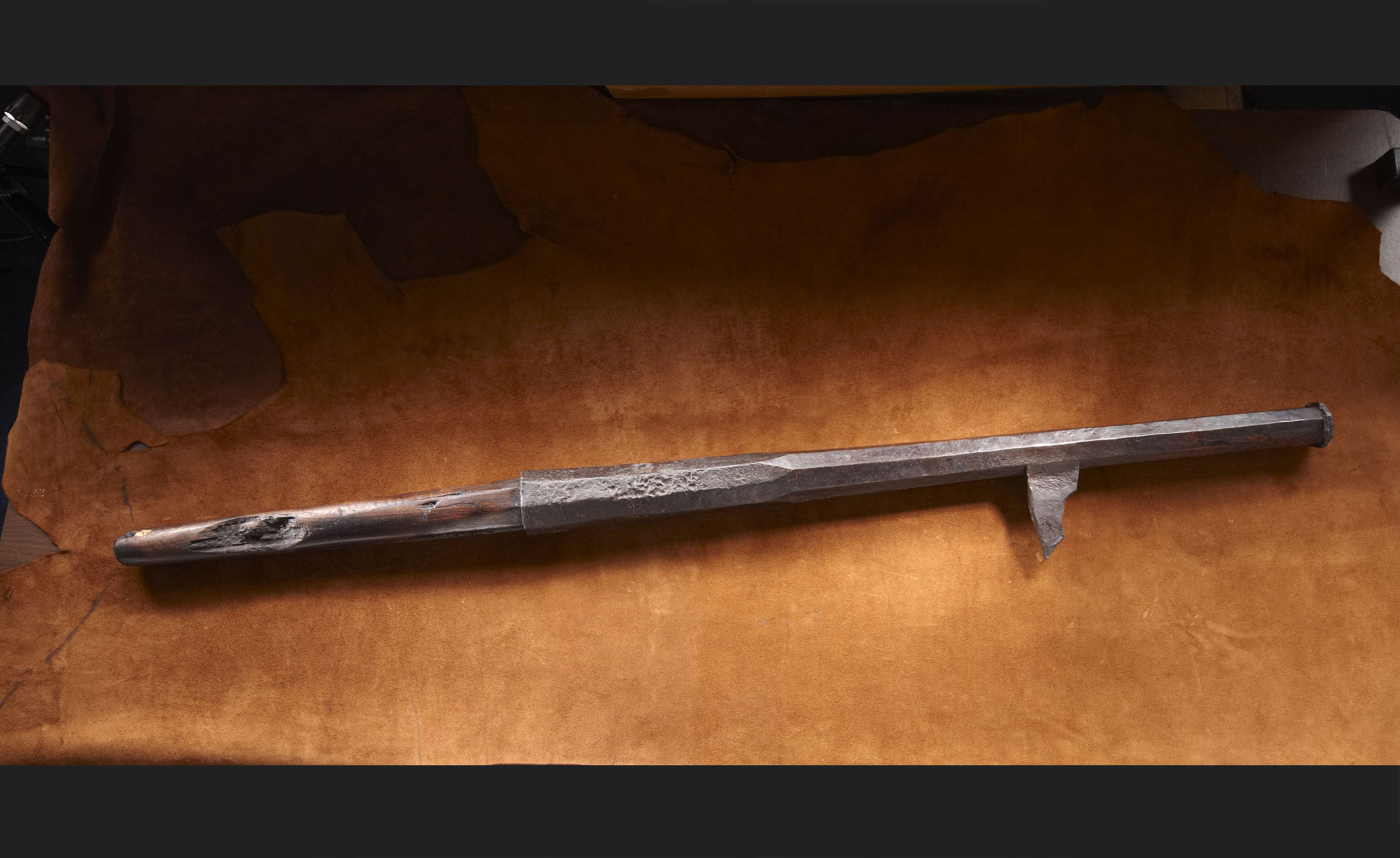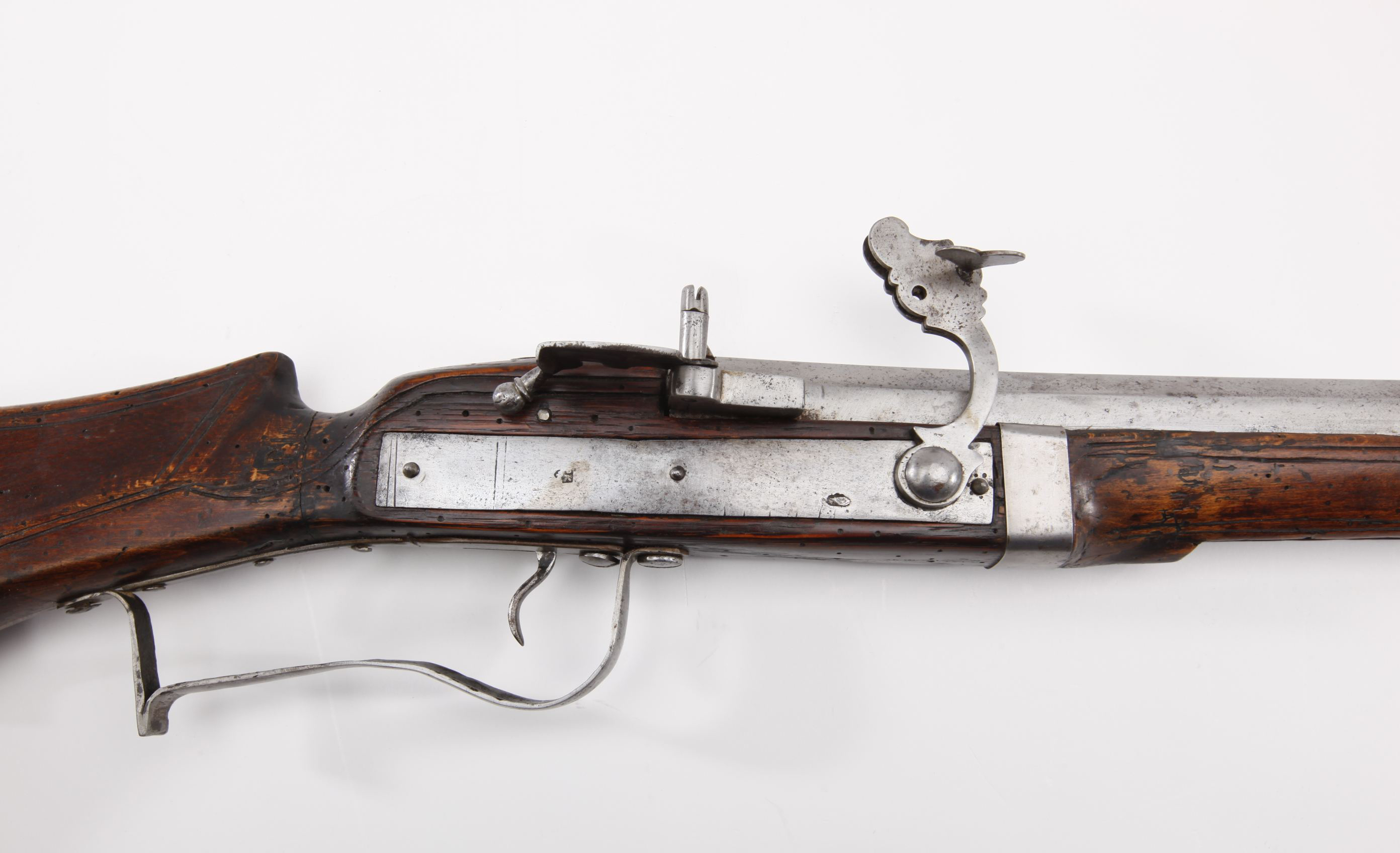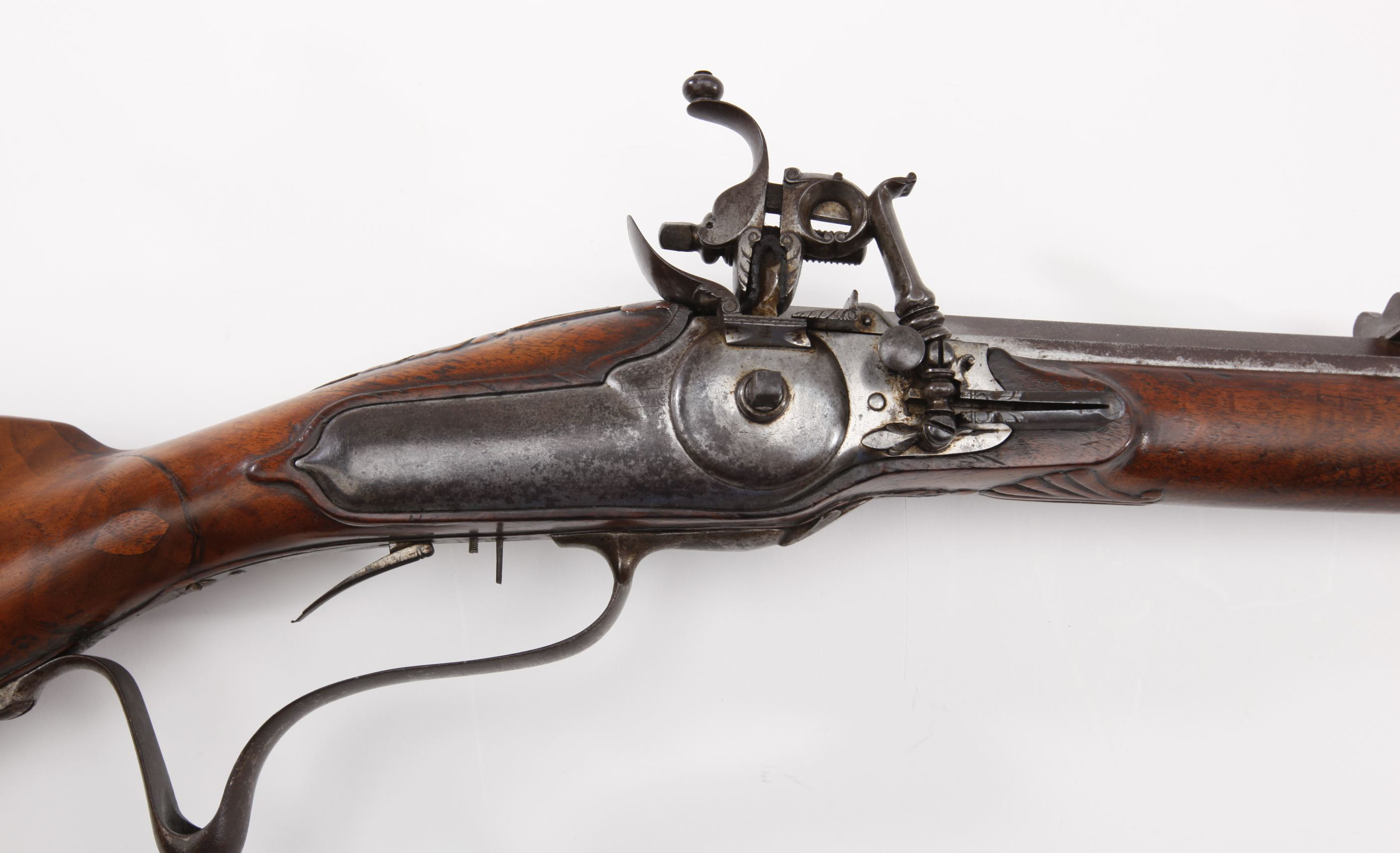Gallery

1 of 1
Early hand cannon, ca. 1350
This circa-1350 hand-forged arm was once part of the Archduke Eugen collection at Salzburg Castle. Hand cannons are the earliest known hand-held firearms. The gun tube was attached to a pole and held by the user, while he or an assistant applied a slow match to the touch hole to ignite the black powder propellant charge. Lacking standard ammunition, hand cannons were typically loaded with stones, nails, or other suitable projectiles...
Read more here

1 of 1
Matchlock
Early 16th Century Spanish Martial Match-Lock Musket (single-shot/ muzzle-loading/ black powder/ ball ammunition) With a smooth-bore barrel, this early musket originated in Spain. It is ignited by smoldering cord held in a match-lock's serpentine arm. Match-locks were inexpensive to fabricate, easy to repair, and quick to load. They do, however, extinguish in the rain, can be seen at night, and are inaccurate...
Read more here
Read more here

1 of 1
Wheellock
Mid-16th Century French Martial Wheel-lock rifle (single-shot/ muzzle-loading/ black powder/ ball ammunition) Produced in France, the circa-1560 display gun employs a wheel-lock ignition system and a rifled barrel. Working like the serrated wheel of a cigarette lighter, these rifles were expensive to manufacture. They are difficult to repair and slow to load, but can be fired in wet weather and are accurate because of their rifled barrels...
Read more here
Read more here

 More Like This From Around The NRA
More Like This From Around The NRA



